Introduction
As we discussed previously in our article about the powerful Egyptian gods and goddesses, ancient Egyptian mythology was influenced by the natural surroundings and weather that affected Egypt itself. For example, the cyclic pattern of the sun and the seasonal pattern of Nile floods (that enriched the soil) played crucial roles in denoting the water and the sun as primary symbols of life – as can be discerned from the importance of Ra.
Furthermore, the very core of the ancient Egyptian civilization – the fertile Nile Delta, was surrounded by arid lands and deserts (populated by fringe groups of raiders and nomads). Thus themes of order – embodied by Egypt, and chaos – embodied by the ‘outer’ realms, also played their dual role in shaping the narrative of various mythological creatures and Egyptian monsters we will discuss in the article. So without further ado, let us take a gander at 12 incredible ancient Egyptian mythical creatures you should know about.
Contents
List of Egyptian Mythology Creatures –
Abtu and Anet
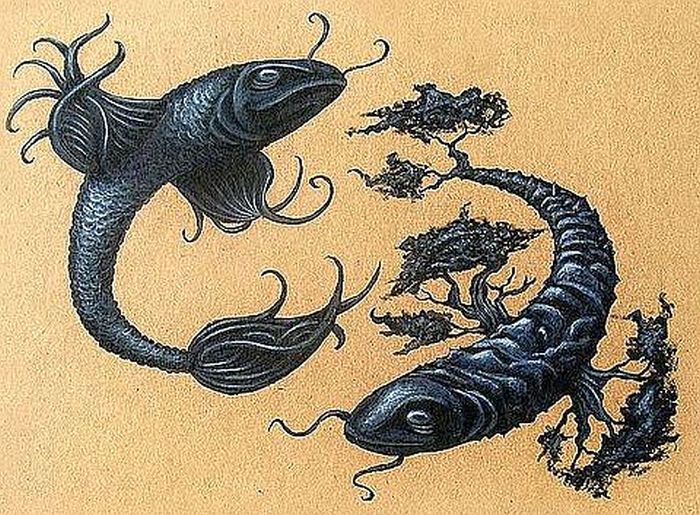
In ancient Egyptian mythology, Abtu and Anet were fascinating fishes. They guided the royal solar barge of none other than the sun god Ra, the supreme deity in the Classical Egyptian pantheon. In a sense, these life-sized fishes were tasked with reconnaissance and protection of the barge – during Ra’s journey through the dark, primordial waters of Nun, onto sunrise.
Ancient Egyptians believed that Ra, as the powerful Egyptian sun god, had to battle the demon serpent Apep (discussed later in the article) every day for the sun to rise – thus signifying the cyclic victory of light over darkness. And in this daily quest, the fish duo Abtu and Anet swam in front of the barge to guide Ra.
It was Abtu who frantically alerted the gods when the solar barge was approached by the Egyptian monsters of darkness, while Anet was tasked with the preliminary defense of the vessel against these vicious mythological creatures. To that end, Anet was often represented as a red tilapia fish (sacred to Ra), with the color red symbolizing protection against danger.
Abtu, on the other hand, with ‘his’ golden shine, was possibly an edible species of tilapia – and used as holistic ingredients for medicines. Abtu also referred to the direction of the West, which suggested the ultimate destination of the ancient Egyptian god Ra as the majestic deity of the sun.
Ammit
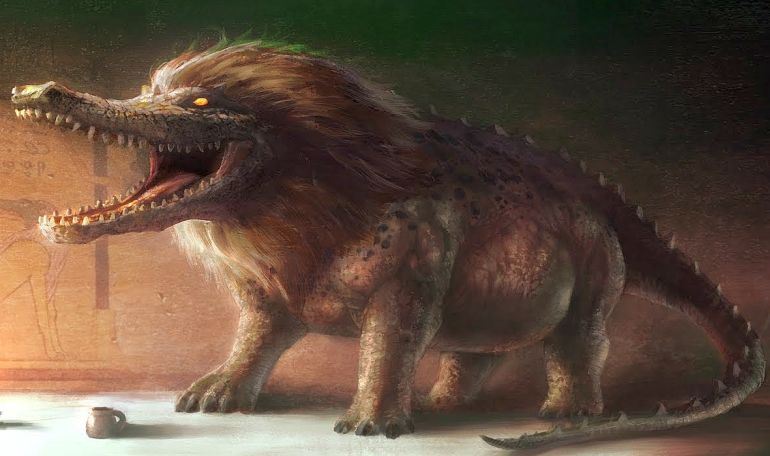
Ammit (also known as Ammut), ominously translated to ‘devourer of dead‘ or ‘soul eater’, was an underworld-dwelling fearsome beast who personified divine retribution in ancient Egyptian religion. Often evoked in feminine form, ‘she’ was primarily associated with the judgment of souls after physical death.
As depicted in the Book of the Dead, Ammit had bizarre composite anatomy of a crocodile head, the front legs of a lion, and the rear end of a hippopotamus. According to the mythical narrative, the Egyptian god Anubis weighed the heart of the dead person against a feather (of Ma’at – the embodiment of truth). And if the heart was heavier (signifying sin), it was unceremoniously devoured by Ammit – thus cursing the ’empty’ souls to roam aimlessly in limbo, instead of otherworldly bliss.
So, in essence, Ammit was not worshiped like other gods. Rather, as one of the vicious mythical creatures, she summed up the collective fear of ancient Egyptians that pertained to “second death”.
However, in some myths, Ammit was likened to the vindictive aspects of Egyptian goddesses like Tawaret and Sekhmet. Furthermore, while Ammit was generally categorized as a demon – who ill-bodingly stood by the lakes of fire, her ultimate duty related to the establishment of order over chaos.
Apep (or Apophis)
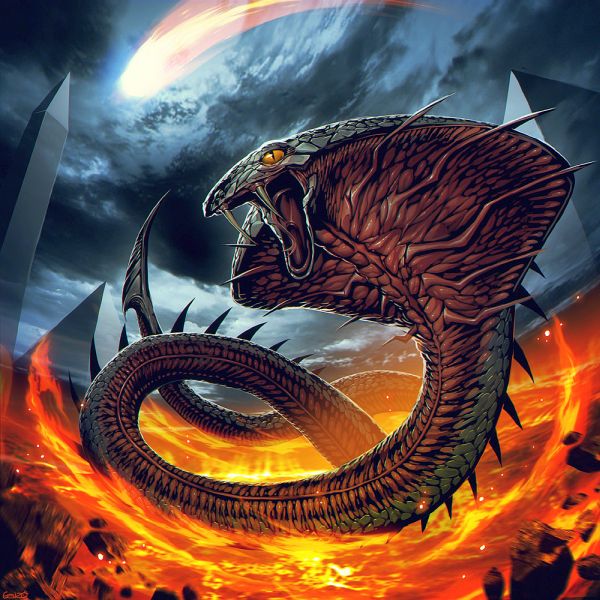
Apep (also known as Aapep or Apophis) was regarded as the very antithesis of the Egyptian gods. Simply put, while the Egyptian gods and goddesses were mostly venerated as forces of order and light, Apep was considered the sinister embodiment of chaos and disorder.
And as such, it was described as a giant mythological snake or serpent (sometimes also depicted as a crocodile) who battled Ra every night during the sun god’s journey toward the sunrise. And since such ambushes and attacks were made under the cover of darkness, Apep was usually perceived as a demon snake who came from beyond the ordered cosmos, possibly the underworld.
In spite of such seemingly negative attributes, the name of Apep was honored during the Fourteenth Dynasty (circa 1725–1650 BC). But the more deadly aspects of the demon snake Apep had to do with the later reimagining and elaboration of the Apep myth during the New Kingdom period (circa 16th – 11th century BC) – wherein the huge snake was presented more as the dark adversary to ‘bright’ Ra.
Interestingly enough, in some myths, Apep, as one of the mythological monsters, is also mentioned as being conceived after the birth of Ra – possibly from Ra’s own umbilical cord. This may have symbolized the eternal struggle and co-existence of darkness as a consequence of light (and vice versa).
Babi
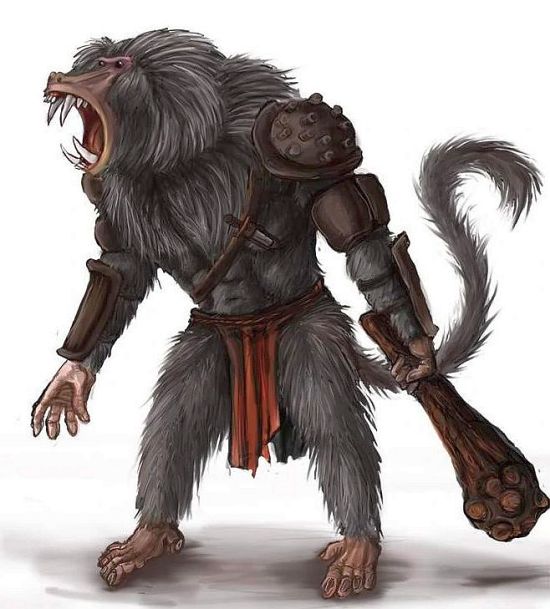
Babi was technically considered one of the (very) ancient Egyptian gods, but his attributes are more akin to the demonic deities we have discussed before. In that regard, many researchers have considered Babi (translating to “bull of the baboons” or “chief of the baboons”) as the very deification of the Hamadryas baboon in Ancient Egypt.
Ancient Egyptians considered baboons as very aggressive and violent creatures, and thus Babi was often represented as a bloodthirsty entity who willingly feasted upon the entrails of the deceased. And much like Ammit (discussed earlier) some ancient Egyptian texts even mention Babi as standing by the lakes of fire to devour the souls of the deceased who were prescribed as sinful.
Talking of symbology, Egyptians also noted the apparent high libidos of baboons – thus identifying Babi as the deity of virility for the dead. Consequently, phallic symbolism was found in an ancient spell of a funerary text that apparently ensured that the dead also enjoyed their sexual intercourse in the afterlife. Given such a unique set of attributes, the destructive Babi was also identified with the chaotic powers of Set, a sometimes antagonistic Egyptian god.
Bennu
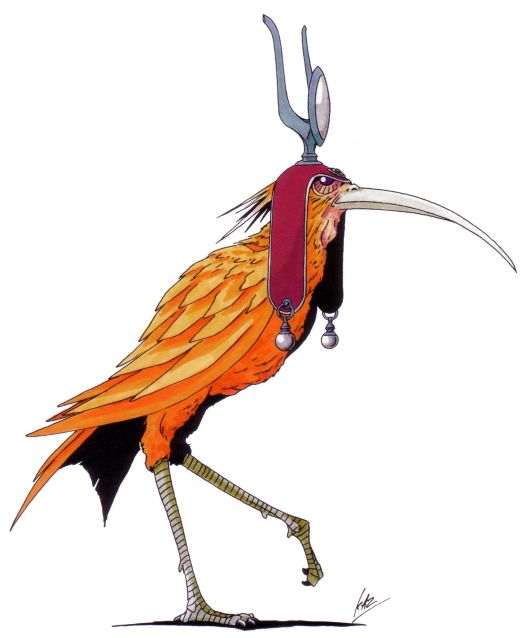
Bennu, regarded as the self-created bird god of ancient Egypt, may have been the precursor (or even inspiration) to the famous Phoenix from Greek mythology. Often linked to the aspects of the sun (or soul of Ra) and rebirth, Bennu, in Egyptian mythology, was said to have ‘called’ for the very scope of creation.
To that end, in one of the creation myths from Heliopolis (a present-day suburb of Cairo), Bennu is said to have crossed the dark watery mass of Nun, before the existence of the world, and serenely made a call that powered creation. In another legend, Bennu represented the very soul of Ra, and together with Atum (the ‘first’ Egyptian god), this incredible life force created the world.
However, the most intriguing aspect of Bennu relates to rebirth. To that end, the very word Bennu is derived from “to rise” or “to shine” in Egyptian (verb wbn). And thus, Bennu was believed to have rebirthed (or renewed) itself, like the sun or even like the mythical Phoenix. This process of death and rebirth also bears similarity to the Osiris myth, where the god Osiris (father of god Horus) is resurrected as the Lord of the Underworld.
Coming to depiction, Bennu as one of the important sacred animals of ancient Egypt during the New Kingdom period, was usually represented as a grey heron wearing an Atef pschent (royal double crown). However, earlier Old Kingdom texts and reliefs hint at Bennu’s depiction as a Yellow Wagtail or even a Mediterranean Kingfisher.
Bes
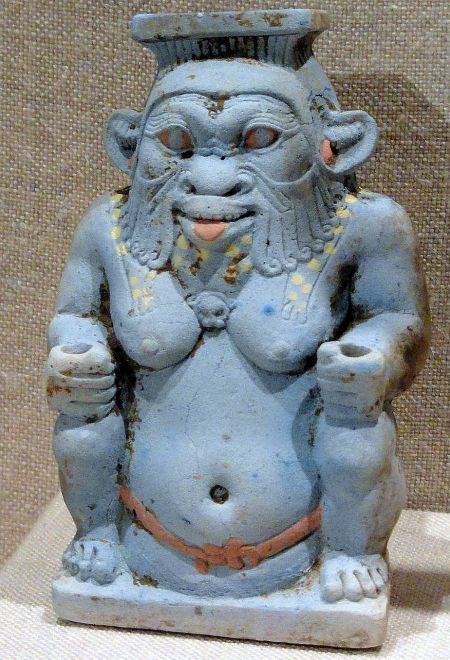
Bes was a unique deity from ancient Egypt in the sense that he didn’t have any formal temple or form of worship dedicated to him. Rather, Bes was perceived and honored as a guardian entity (or a group of various obscure deities) who protected the household from evil creatures such as snakes and spirits. Consequently, his scope of protection included the mothers, children, and even the arduous process of childbirth.
The uniqueness of Bes also comes from the depictions of this mythical entity in ancient Egyptian items, like mirrors, cups, and ointment vessels. In that regard, as opposed to a pristine figure and garb, Bes was represented as a stocky dwarf with an unkempt beard, lolling tongue, and unusually long arms (and sometimes wearing a lion mask).
These physical attributes mirrored the aspects of Bes – as the deity, with his goofy countenance, was supposed to bring joy to his patrons. At the same time, his perceived hideousness, along with loud music, was supposed to drive away the evil spirits and demons. Interestingly enough, the veneration of Bes later spread to Phoenicians and even Romans – as could be discerned from depictions of Bes inside their legionary shields.
Egyptian Griffin
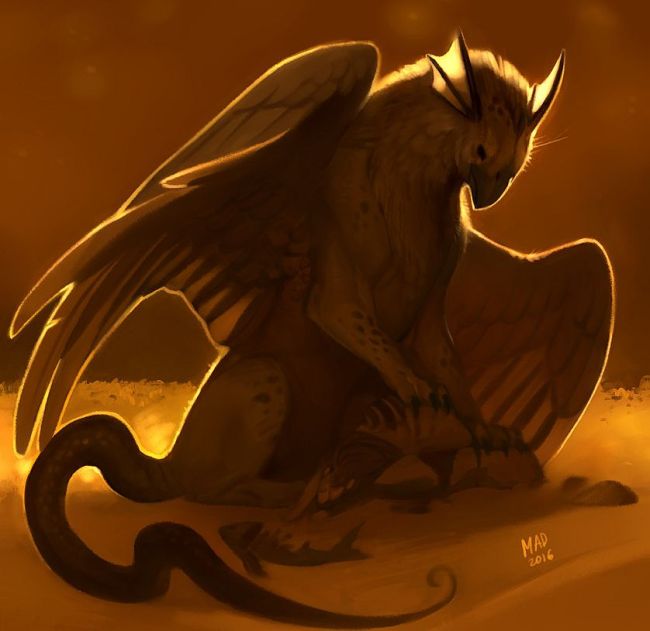
The Griffin, by virtue of its projected majesty, was one of the mythical creatures that were prevalent in many ancient cultures, ranging from Persia, and Egypt, to Assyria, and Greece. However, in Egyptian mythology, the Griffin was more symbolic in nature, as opposed to having a dedicated myth behind it.
To that end, one of the oldest depictions of the Egyptian Griffin is found in a palette from Hierakonpolis, which is dated from circa 3100 BC. Also known as the ‘Two Dog Palette‘, the object is engraved with many peculiar mythological creatures (including the Serpopard – discussed later). One of them is a slender feline-bodied beast with the head of a falcon and comb-like wings.
In another ornamental piece, sourced from the Tomb of Mereret (circa 19th century BC), the Egyptian Griffins are depicted as trampling people beneath their feet – which alludes to the hegemony of the Pharaoh over his enemies.
Also one should note, that like many other Egyptian monsters, Griffins were vaguely associated with important gods and goddesses. To that end, the falcon heads (instead of the eagle) suggest the “linking” of the god Horus to such majestic mythological creatures.
Egyptian Sphinx
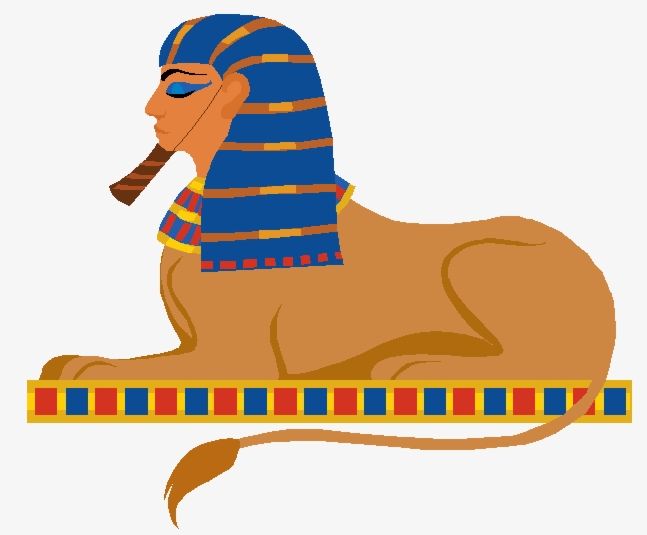
The Sphinx is probably one of the most recognizable mythical creatures one would normally associate with ancient Egypt. However, interestingly enough, much like the Griffin (discussed earlier), the Sphinx was conceived more as a symbol rather than as an individual mythical creature in Egyptian religion.
In fact, the oldest known depiction of the Sphinx pertains to the famed Great Sphinx of Giza – which still remains the world’s largest monolithic statue, and also our planet’s oldest known monumental sculptural piece!
In that regard, the Egyptian Sphinxes were usually portrayed with the body of a lion and the head of a human, falcon, or ram. These “hybrid” mythological creatures were placed as protectors of sanctuaries and pyramids, thus symbolically representing the divine power of both the Pharaoh and Ra.
Such portrayals are in contrast to Greek mythology where Sphinxes are generally presented as whimsical monsters (offsprings of the serpent Typhon) who zealously guard treasures. And while physical depictions of Greek Sphinxes bear some semblance to their ancient Egyptian counterparts, as lion-bodied beasts, the former also tend to have wings and snake-like tails.
Khepri
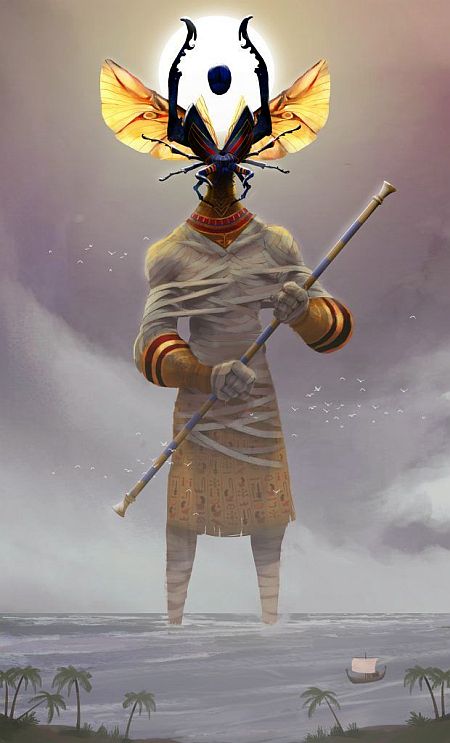
Connected to the scarab beetle (or dung beetle), Khepri was one of the rare Egyptian mythical creatures who was usually depicted as a human body with a beetle head in ancient Egyptian funerary papyri. There was a symbolic side to the whole affair of Khepri worship – with the entity alluding to the divine forces that moved the sun across the sky.
The connection was derived from the action of scarab beetle rolling balls of dung across the rigorous desert surface – while the young beetles emerged from inside the dung, from the eggs laid by the parent. This is in fact related to the Egyptian word kheper, which roughly translates to – “to change” or “to create”.
In any case, Khepri was also considered subordinate to the more exalted sun god Ra, which on occasion also translated to Khepri as one of the aspects of Ra. For example, Khepri was perceived as the personification of the morning sun, while Ra was seen as the more effulgent midday sun.
Interestingly, the people of ancient Egypt also regarded Khepri as one of the Egyptian gods (or a mythical creature) of rebirth. This was possible because the Egyptians believed beetles appeared out of nowhere and yet were able to procreate.
Serpopard
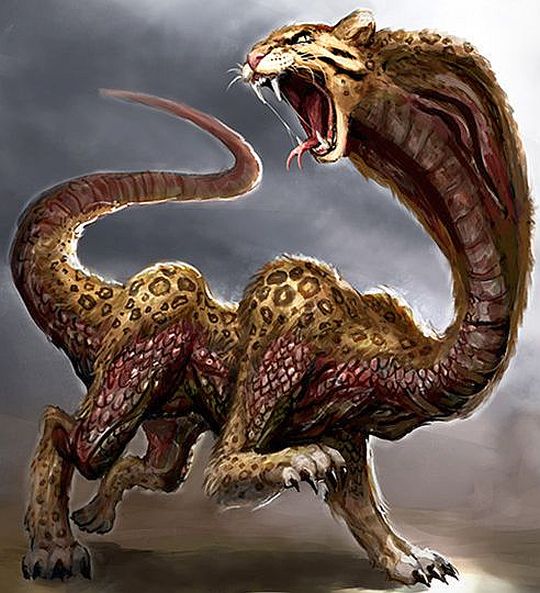
Serpopard, as a term, is a modern portmanteau of the words ‘serpent’ and ‘leopard’. However, it refers to one of the unique mythological creatures of Ancient Egypt – having the body of a leopard, the long neck of a serpent, and a head of a feline (or a serpent).
Now in terms of history, researchers have still not found the ancient term for these Egyptian monsters. But in some depictions, found in various Egyptian ornaments, they have been interpreted as “serpent-necked lions”. Usually presented as mythical creatures who have been conquered (or tamed), the Serpopard might have represented the chaos that was perceived to have existed beyond the borders of Egypt.
Quite intriguingly, Serpopard or similar mythical creatures were also depicted by other ancient cultures, including Mesopotamia and Elam. However, their representations were different from Egyptian artworks. For example, the cylinder seal of Uruk clearly depicts two Serpopard-like creatures whose necks are intertwined – suggesting cooperation or synthesis.
Set Animal
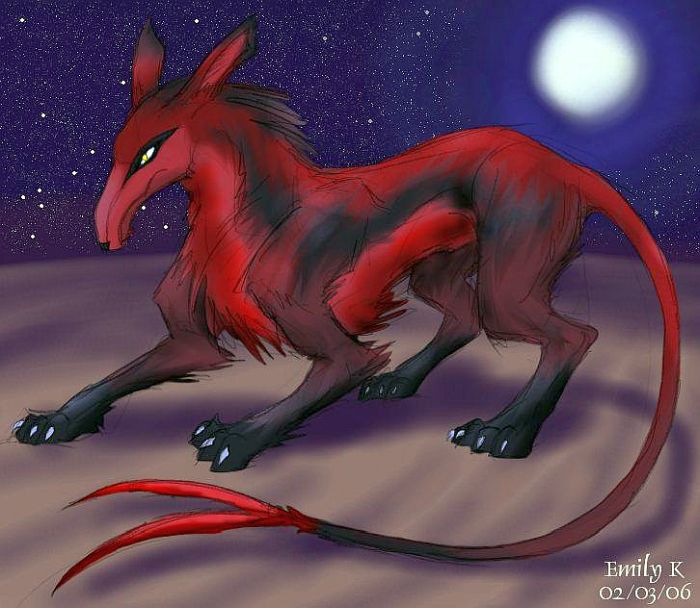
The enigmatic Set Animal (or sha) was the totemic animal of the Egyptian god Set. It symbolized both the nature of cunning and chaos embodied by Set – who was often perceived as an antagonistic deity, with his domains ranging from eclipses and storms to thunders.
However, beyond the attributes of Set, it was the very strange depiction of the Set Animal that makes it fascinating. In some representations, the mythical beast is seemingly a composite of an ant-eater (with a long round snout), a donkey, and a jackal (or a fennec fox). This odd anatomy is made even more peculiar with a stiff forked tail and unnaturally erect ears.
A few scholars have even argued that the Set Animal possibly represents a giraffe, although ancient Egyptians seem to have differentiated between giraffes and this enigmatic hybrid creature. And even more intriguing is the fact that in spite of its apparent fantastical nature, the sha was usually depicted in a realistic manner like actual creatures.
Uraeus
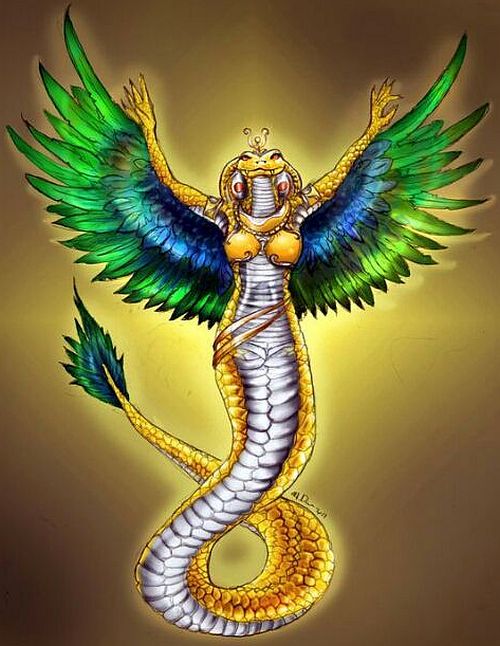
Uraeus (or Iaret – meaning “rearing cobra”) was one of the mythical creatures that represented the very royalty, sovereignty, and divine authority of the Egyptian Pharaohs. The rearing cobra also symbolized Wadjet, an ancient Egyptian deity (often depicted as a cobra goddess) venerated as the protector of the River Nile and Lower Egypt.
Interestingly enough, similar to Wadjet, the seemingly obscure goddess Nekhbet, with her white vulture head, was honored as the protector of Upper Egypt (dating back to Egyptian prehistory). And by the time both Upper and Lower Egypt were united, circa 3000 BC, the symbols of these two protector deities were combined with the royal Uraeus encircling the double crown (pschent) of the Pharaohs.
This element of symbolism associated with the Uraeus was also found in other ancient Egyptian art forms, including ornaments worn by royal women and even in hieroglyphs. Moreover, there is a hypothesis in academic circles that relates how the motifs of Seraphim (the heavenly beings from Abrahamic religions like Judaism, Christianity, and Islam) were possibly ultimately derived from the iconography of Uraeus in Ancient Egypt.
Honorable Mention – El Naddaha
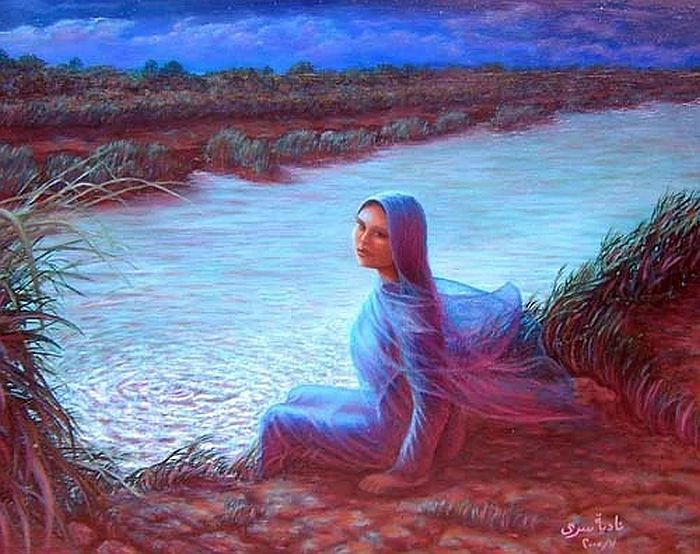
A departure from ancient Egypt to our modern world, the legend of El Naddaha probably started in 20th-century rural Egypt. Often described as a female spirit, akin to the Greek Siren (or even Celtic Banshee), El Naddaha is said to reside by the banks of the Nile.
Often described as a stunningly beautiful woman, with almost translucent skin and garbed in sensuous attire, her hauntingly hypnotizing call supposedly allures the men toward her.
In some urban legends, the trance could be broken only by sheer will – when the men are able to run away from the ‘trap’. But if the trance is not broken, the victim is drawn towards the river and drowned, presumably to be later devoured by El Naddaha.
Featured Image: Artwork by MaskerArt
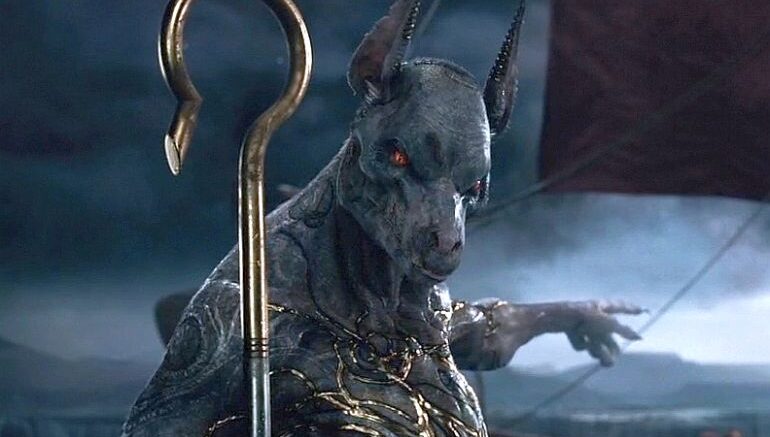
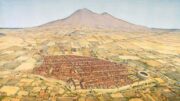
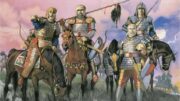
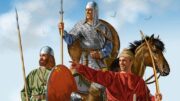
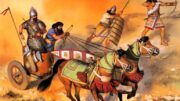
Be the first to comment on "12 Fascinating Ancient Egyptian Mythological Creatures"